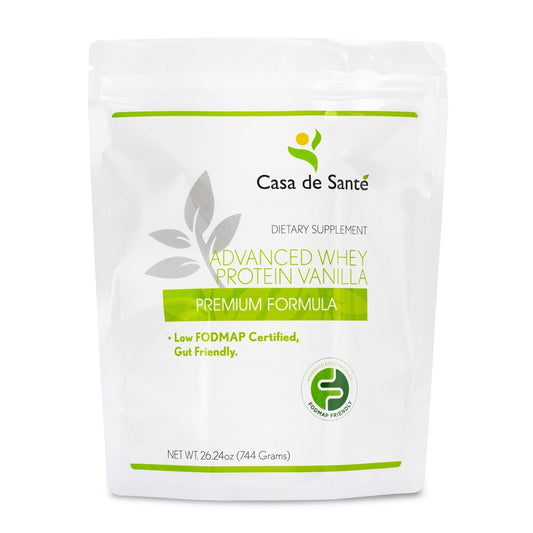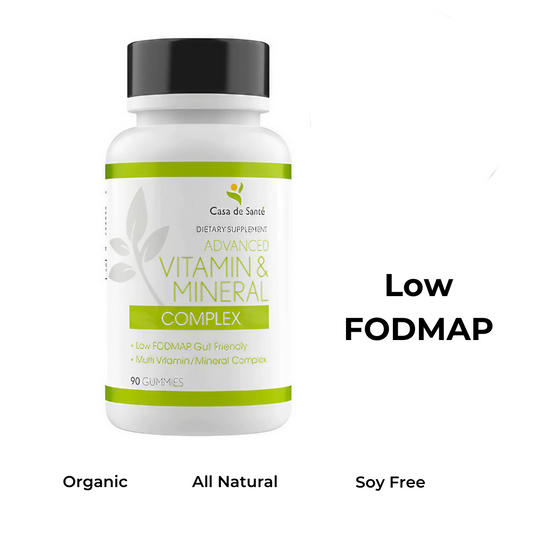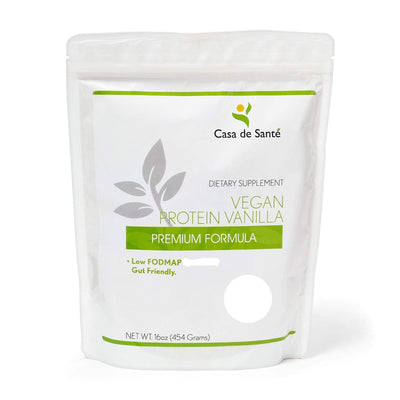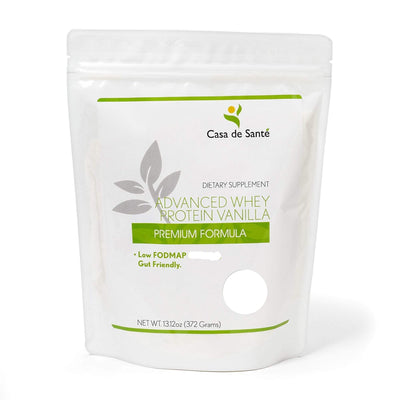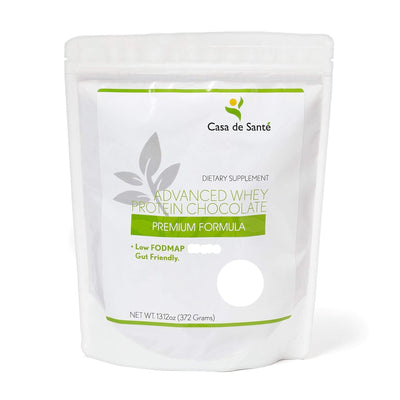Is Green Chili High In Histamine
Is Green Chili High In Histamine
Green chili is a popular ingredient in many cuisines, known for its distinct flavor and spicy kick. However, if you have histamine intolerance, you may be wondering if green chili is safe for your diet. In this article, we will explore the histamine content of green chili and its implications for those with histamine intolerance.
Understanding Histamines: A Brief Overview
Before diving into the specifics of green chili and histamine, let's first understand what histamines are. Histamines are chemicals that are naturally produced by our bodies and play a vital role in our immune response. They are released when our body detects an allergen or an injury, causing symptoms such as itching, swelling, and inflammation.
What are Histamines?
Histamines are neurotransmitters that are mainly produced by mast cells, a type of white blood cell. They are involved in various physiological processes, including the regulation of gastric acid secretion, vasodilation, and the contraction of smooth muscles. When released, histamines bind to specific receptors in our body, triggering the inflammatory response.
Role of Histamines in the Body
Histamines serve as crucial mediators in our immune system, helping to defend against harmful substances and pathogens. They play a role in allergic reactions, helping to recruit other immune cells to the site of the allergen and amplifying the immune response.
Furthermore, histamines are involved in the regulation of sleep-wake cycles, appetite, and mood. They have been found to play a role in the central nervous system, influencing various brain functions such as learning, memory, and cognition.
In addition to their role in the immune system and the central nervous system, histamines also have an impact on the digestive system. They stimulate the secretion of gastric acid, aiding in the digestion of food. However, an excessive release of histamines can lead to conditions such as gastric ulcers and gastroesophageal reflux disease (GERD).
Moreover, histamines are involved in the regulation of blood vessel dilation and permeability. When histamines bind to specific receptors on blood vessel walls, they cause vasodilation, which increases blood flow to the affected area. This increased blood flow helps in the delivery of immune cells and nutrients to the site of injury or infection.
Additionally, histamines play a role in the contraction of smooth muscles, such as those found in the bronchial tubes and intestines. This contraction can lead to symptoms like difficulty breathing and abdominal cramps, especially in individuals with conditions like asthma and irritable bowel syndrome.
Overall, histamines are multifunctional molecules that have a significant impact on various systems within our body. From their role in the immune response to their involvement in regulating sleep, digestion, and blood vessel function, histamines are essential for maintaining homeostasis and protecting our body from harm.
The Nutritional Profile of Green Chili
Before we delve into the histamine content of green chili, let's take a moment to appreciate its nutritional profile. Green chili is a rich source of vitamins and minerals, making it a valuable addition to any diet.
Green chili, also known as chili pepper or capsicum, belongs to the nightshade family and is widely used in various cuisines around the world. It is known for its vibrant green color and spicy flavor, which adds a kick to any dish.
Key Nutrients in Green Chili
Green chili is loaded with essential nutrients. It is an excellent source of vitamin C, providing a significant portion of your recommended daily intake. Vitamin C is essential for the growth and repair of tissues, as well as supporting the immune system. In fact, a single green chili pepper can contain up to 181% of the recommended daily intake of vitamin C.
In addition to vitamin C, green chili contains vitamins A, E, and K. Vitamin A is important for maintaining healthy vision, while vitamin E acts as a powerful antioxidant, protecting cells from damage. Vitamin K plays a crucial role in blood clotting and bone health.
When it comes to minerals, green chili is no slouch either. It is a good source of potassium, a mineral that helps regulate blood pressure and maintain proper heart function. It also contains magnesium, which is involved in over 300 biochemical reactions in the body, including energy production and muscle function.
Health Benefits of Green Chili
Beyond its nutritional value, green chili has been associated with several health benefits. It contains capsaicin, a compound known to possess anti-inflammatory and antioxidant properties. Capsaicin has been shown to aid in pain relief, boost metabolism, and support cardiovascular health.
Research suggests that capsaicin may help reduce inflammation in the body, which is linked to various chronic conditions such as arthritis, heart disease, and certain types of cancer. Its antioxidant properties also help neutralize harmful free radicals, which can contribute to aging and disease development.
Moreover, the spiciness of green chili can stimulate the release of endorphins, promoting a sense of well-being. Endorphins are neurotransmitters that act as natural painkillers and mood enhancers. So, adding a little green chili to your meals can not only add flavor but also give you a natural mood boost.
It's worth noting that while green chili can offer these potential health benefits, individual tolerance to its spiciness may vary. Some people may find it too hot to handle, while others may enjoy the fiery sensation it brings.
In conclusion, green chili is not only a flavorful ingredient but also a nutritional powerhouse. Its high vitamin and mineral content, along with the potential health benefits of capsaicin, make it a great addition to a well-balanced diet. So, don't hesitate to spice up your dishes with some green chili and reap the rewards it has to offer!
Histamine Content in Green Chili
Now that we have covered the background, let's address the burning question: does green chili contain high levels of histamine?
Green chili, a popular ingredient in many cuisines around the world, has been a subject of curiosity when it comes to its histamine content. Histamine, a compound naturally found in various foods, can cause allergic reactions in some individuals. Therefore, understanding the histamine levels in green chili is essential for those who are sensitive to this compound.
Factors Influencing Histamine Levels in Foods
The histamine content of food can vary depending on various factors. One crucial factor is the freshness of the food. Histamine levels tend to increase as food ages, especially when stored improperly. This is why it is always recommended to consume fresh produce, including green chili, to minimize the histamine intake.
In addition to freshness, certain preparation methods can also influence histamine levels in foods. For example, fermentation and curing processes can significantly increase histamine content. This is why fermented foods, such as aged cheeses and cured meats, are known to have higher histamine levels compared to their fresh counterparts.
Measuring Histamine Levels in Green Chili
While the exact histamine content of green chili may vary, studies have shown that it generally falls within a moderate range. Fresh green chili peppers are typically lower in histamine compared to aged or fermented foods. This is good news for those who enjoy the spicy kick of green chili but are concerned about histamine intake.
However, it is important to note that individual tolerance levels may vary. Some individuals may be more sensitive to histamine and may experience adverse reactions even with moderate levels found in green chili. Therefore, it is always advisable to consume foods in moderation and observe any adverse reactions.
In conclusion, green chili does contain histamine, but the levels are generally moderate, especially in fresh peppers. By being mindful of the freshness of the food and practicing moderation, individuals can enjoy the unique flavors of green chili without worrying about excessive histamine intake.
Green Chili and Histamine Intolerance
If you have histamine intolerance, you may experience adverse reactions when consuming foods high in histamine. Common symptoms include headaches, itching, hives, digestive issues, and nasal congestion.
However, histamine intolerance is a complex condition that can manifest differently in each individual. Some people may only experience mild symptoms, while others may have more severe reactions. It is important to understand the underlying mechanisms of histamine intolerance and how it affects your body.
Histamine intolerance occurs when the body's ability to break down histamine is impaired, leading to an accumulation of histamine in the bloodstream. This can result in a variety of symptoms, which may vary from person to person. It is essential to consult with a healthcare professional to properly diagnose histamine intolerance.
When it comes to managing histamine intolerance, diet plays a crucial role. Following a low histamine diet can help reduce symptoms and improve overall well-being. However, it is important to note that the histamine content of foods can vary depending on various factors such as ripeness, processing, and storage.
Green chili, a popular ingredient in many cuisines, may contain moderate levels of histamine. For individuals with histamine intolerance, this means that they may need to avoid or limit their consumption of green chili. However, it is important to remember that everyone's tolerance to histamine is different, and what may trigger symptoms in one person may not affect another.
Working with a healthcare professional or a registered dietitian is highly recommended when developing a personalized diet plan for managing histamine intolerance. They can provide guidance on which foods to include and which to avoid, ensuring that your nutritional needs are met while minimizing histamine intake.
Additionally, it is worth noting that histamine intolerance is not solely related to diet. Other factors such as stress, medications, and environmental triggers can also contribute to histamine reactions. Therefore, adopting a holistic approach to managing histamine intolerance is essential.
By understanding your body's unique response to histamine and making informed choices about your diet and lifestyle, you can effectively manage histamine intolerance and improve your quality of life.
Alternatives to Green Chili for Low Histamine Diets
If you are following a low histamine diet or simply want to reduce your histamine intake, there are several alternatives to green chili that can add flavorful spice to your meals.
Low Histamine Foods for Spicy Flavor
While green chili may not be suitable for everyone with histamine intolerance, there are plenty of other options to consider. Spices such as black pepper, turmeric, ginger, and cumin can add a delicious kick to your dishes without triggering histamine-related symptoms. Additionally, fresh herbs like basil, thyme, and parsley can elevate the flavor profile of your meals.
Preparing Low Histamine Meals
When preparing low histamine meals, choose fresh ingredients and opt for cooking methods that preserve the natural flavors while minimizing histamine production. It is advisable to avoid canned or processed ingredients, as they may contain higher levels of histamine.
In conclusion, while green chili does contain histamine, the levels are generally moderate. Whether or not it is suitable for your individual needs depends on your tolerance levels and any existing histamine intolerance. Remember, everyone is unique, and it is essential to listen to your body and consult with a healthcare professional when making dietary choices.








